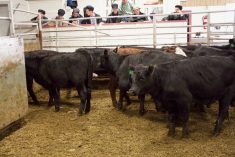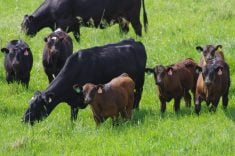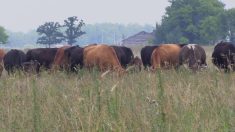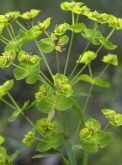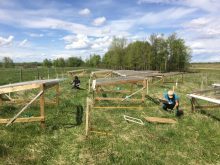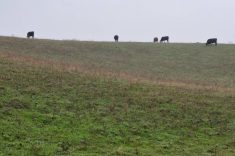How much are native grasslands worth? One research project is aimed at answering that question.
The Genome Prairie project, a multi-year, $5.9 million endeavour that involves public and academic stakeholders, will use genomic tools in attempts to figure out the dollar value of rangelands and the ecological goods and services they provide.
Why it matters: Producers hear a lot about the ecological benefit of native grassland, but farm management choices have to pay financial as well as ideological dividends.
Read Also
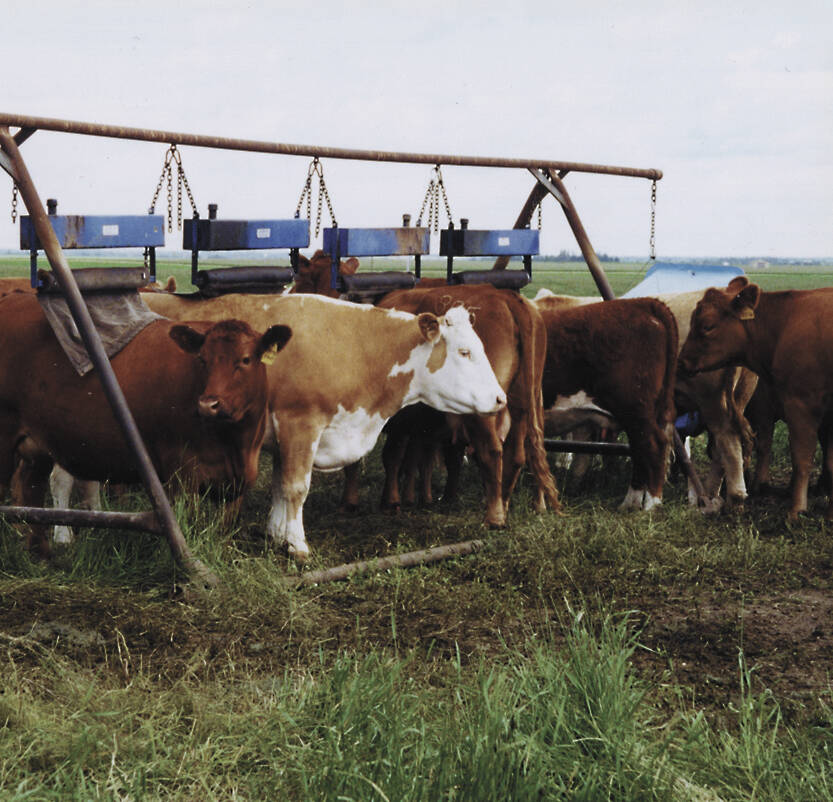
Shifting standards on cattle parasite control
Parasite product resistance has more farmers and veterinarians thinking differently about how to control issues like lice or worms.
The research could be applied to scenarios like measuring the real cost of converting a parcel of native rangeland to tame pasture or cropland.
“We know that our rangelands in Western Canada provide a lot of different ecosystem services to the environment, ranging from fixing carbon into the soil to pollination services,” said project lead Sean Asselin of AAFC Swift Current.
He doesn’t expect it will be easy to assign accurate values to those goods and services but hopes it will drive political will and more recognition of grassland value.
“From a shorter-term perspective with land management, I think one thing that we’ll get out of this project is showing that if you’re going to convert this land when you have ‘this’ species present, ‘this’ is what’s going to happen to your pollinators or ‘this’ is what’s going to happen to your soil community.”
The point is not to tell farmers what to do with their land, said Asselin. The goal is to compile decision-making data to help farmers make the most ecologically and economically sound land use decisions for their operations.
“It has to do with what are the characteristics of your land? Are you going to be losing soil carbon? Are you going to be losing soil nitrogen if you switch to another system? What’s going to happen to pollination services? There’s a lot of other kind of subtle ecosystem service effects.”
The project will also extend to cost and supply barriers in the native seed market that might hinder rangeland restoration.
The impact
Asselin expects the project, which completes in 2027, will be the seed of a much bigger pool of future research. Baseline values could be applied long after the project ends, he said, and he expects that, from an academic view, researchers will be teasing out answers to the questions that come out of this study for years.
Natural and seeded rangeland systems cover more than 16 million hectares of land in Canada. Their commonly cited ecological benefits include feed for cattle, habitat for pollinators and birds, and carbon sequestration, offsetting greenhouse gas emissions. Globally, they store 33 per cent of terrestrial carbon and 38 per cent more carbon than annual crops, according to AAFC.
However, the federal ag department notes, around 75 per cent of Canada’s grasslands have been lost over time through conversion to cropland, housing or industrial purposes. Preventing that conversion is the “number one thing” Canada can do to reduce its carbon emissions, said Asselin.
Initiatives to restore rangeland have cropped up as policy makers and industry try to turn public focus to soil health.
Earlier this year, a joint report from Birds Canada and the Central Grasslands Roadmap Initiative suggested insurance-based incentives to keep land from being broken. Funding programs have included cost-shares for seeding perennial forages, conversion of marginal crop acres and other grassland management.
Despite increased public and policy interest, putting broken ground back into grassland may not make sense to the producer. It can be prohibitively expensive, time consuming and may not return the full ecological value of a parcel’s pre-converted state.
“It’s a lot easier to maintain land in its original state than converting it and then swapping it back to a native pasture or a native rangeland. It’s just very difficult to recreate the system once it’s been disturbed,” Asselin said.
Turning to genomics
The four-year project, which started in 2023, covers all Prairie provinces.
Project researchers will use DNA-based tools to get a full picture of soil, plant and insect diversity in a rangeland.
“There’s no discounting the importance of genetic diversity in rangelands,” Asselin said. “If we have variation, let’s say in drought tolerance characteristics in a diverse population, if they get hit by a severe drought, some plants will do just fine and some are not going to survive. But because we had that genetic diversity there to begin with, they’re more resilient to future stresses.”
Use of DNA markers instead of visual samples alone will allow researchers to get a deeper understanding of the genetic diversity in rangelands, he said.
The project’s test metrics include plant genomics, insect biodiversity and soil genomics, among others. Led by Asselin and plant ecologist Jon Bennett with the University of Saskatchewan, the team includes Hongjie Zhang (soil carbon researcher, AAFC Swift Current), Doug Cattani (plant breeder/agronomist, University of Manitoba), Jason Gibbs and Kyle Bobiwash (entomology, University of Manitoba), Sean Prager (entomology, University of Saskatchewan), Patrick Lloyd-Smith (ag economics, University of Saskatchewan), Rafael Otfinowski (plant ecologist, University of Winnipeg) and Seok-Bum Ko (electrical and computer engineering, University of Saskatchewan).
Lloyd-Smith will put values to the ecological good and services while Ko, a machine learning expert, will develop the end-use tool for farmers. Plant researchers on the team will investigate gene sequencing and how genes vary across individuals in the ecosystem.
DNA markers can be used to predict the stress tolerance of different populations.
“We are doing some drought testing on native plant materials and we’re trying to develop some DNA-linked indicators that are associated with greater stress tolerance,” Asselin said.
“The advantage of that is once we have a good understanding of genetic markers associated with stress tolerance, we can use those markers to screen new populations and identify materials that are better suited for drought-prone regions or more associated with particular climates.”
The soil research experts will assess various gene sequences associated with different soil micro-organisms.
“They’re also sequencing soil samples to look at the variation in the composition of different soils and how that associates with different plant and insect species in the field,” Asselin said.
Work on insects will also turn to a practice referred to as DNA metabarcoding, which is “basically little fragments of DNA that can help you identify a species.”
That sub-project will focus on the interactions between various insects and plants, whether through detecting DNA from the insects themselves or finding “DNA fingerprints” that insects leave behind after visiting a plant. This is called environmental DNA, said Asselin.
“That helps (researchers) understand if the plants have been visited by different insect species, because they can’t capture every species out there. It’s giving an indication that ‘this’ particular group of insects tends to associate with ‘these’ plant species, or we know that ‘this’ species is present.
“Even if they’re not able to actually capture the bug, they can capture that DNA fingerprint using environmental DNA.”
The project’s funding partners include South of the Divide Conservation Action Plan, Saskatchewan Agriculture Development Fund, Agriculture and Agri-Food Canada, AAFC Living Labs and Genome Canada.




